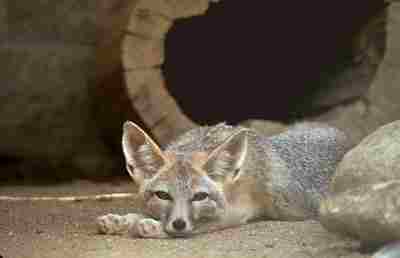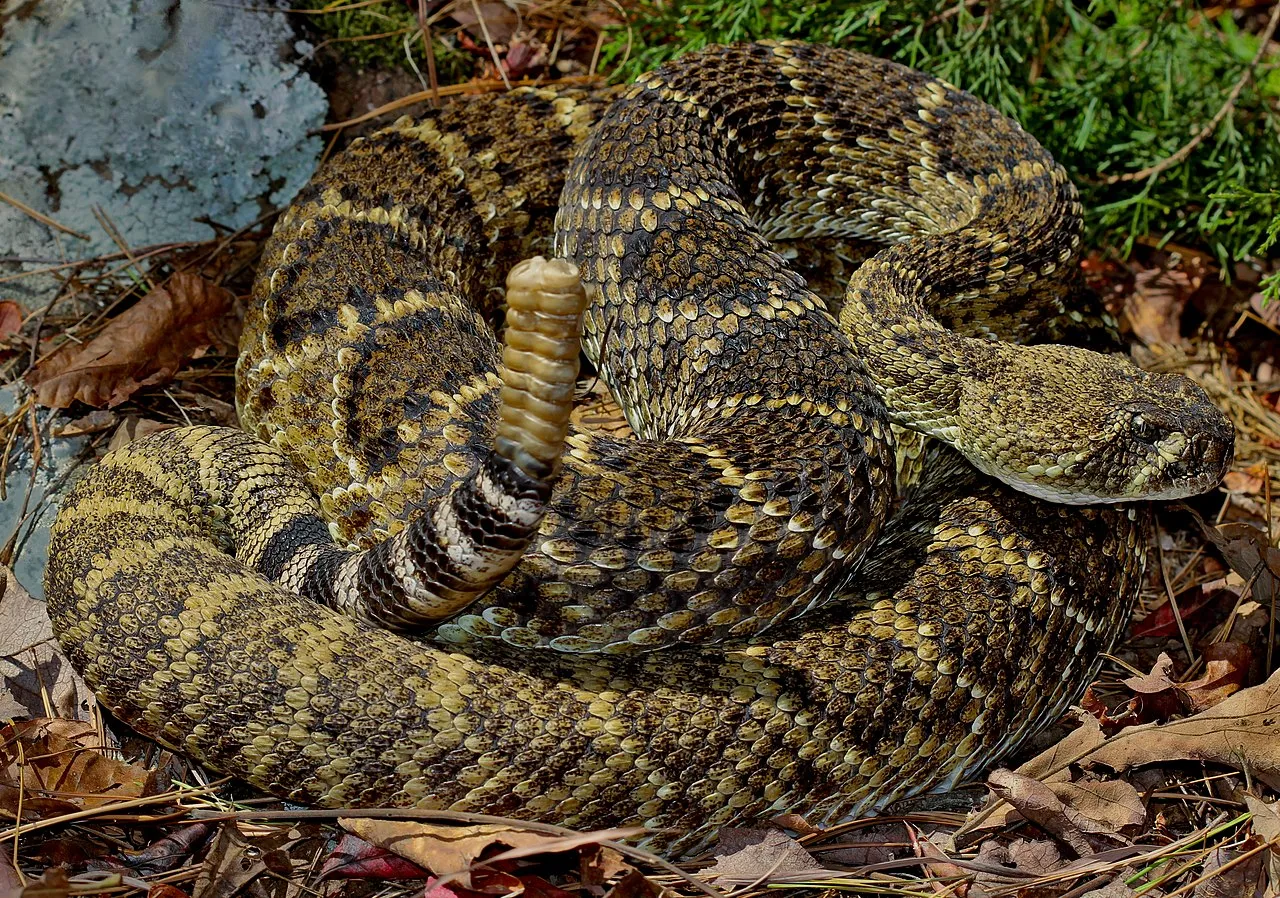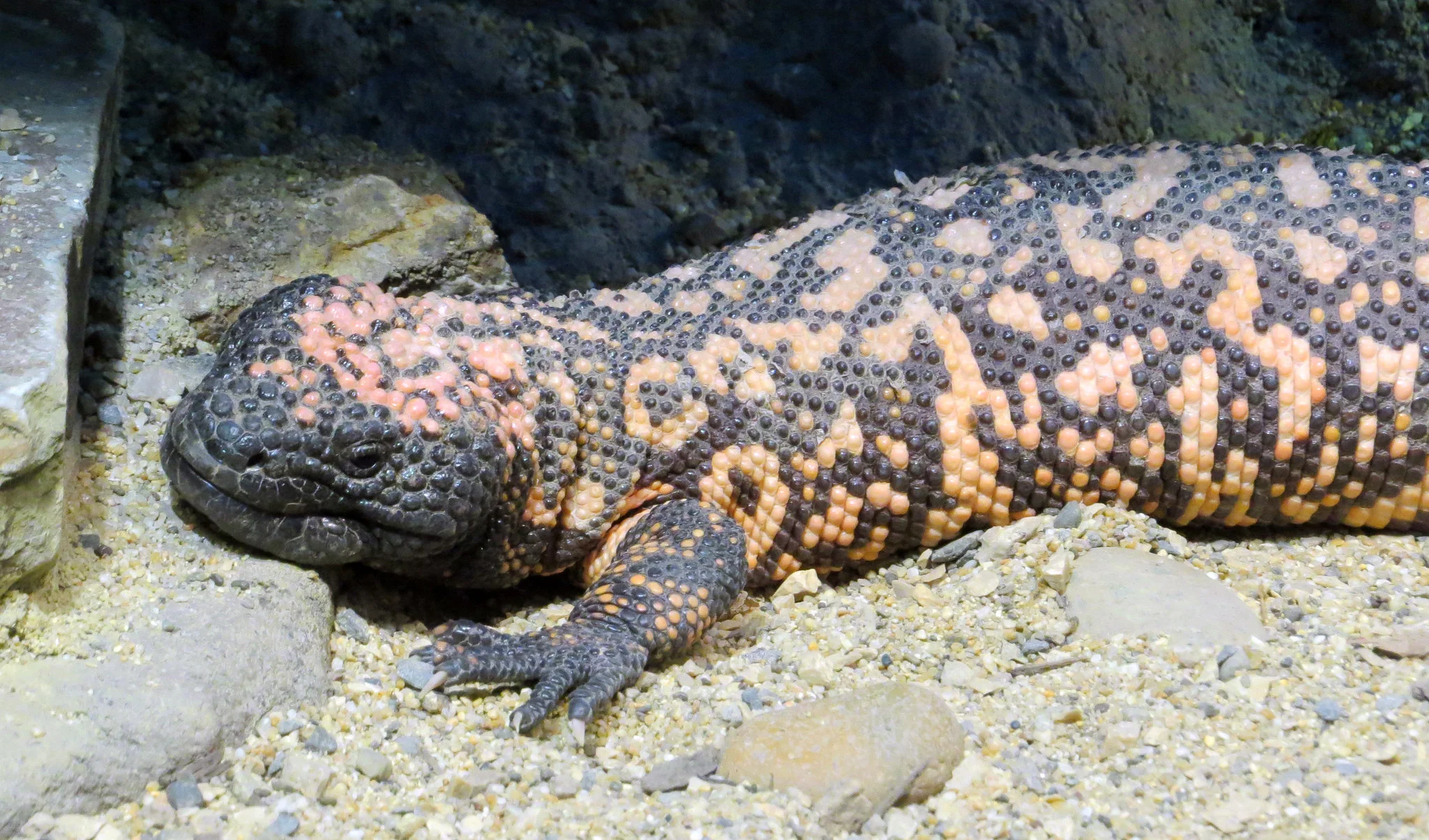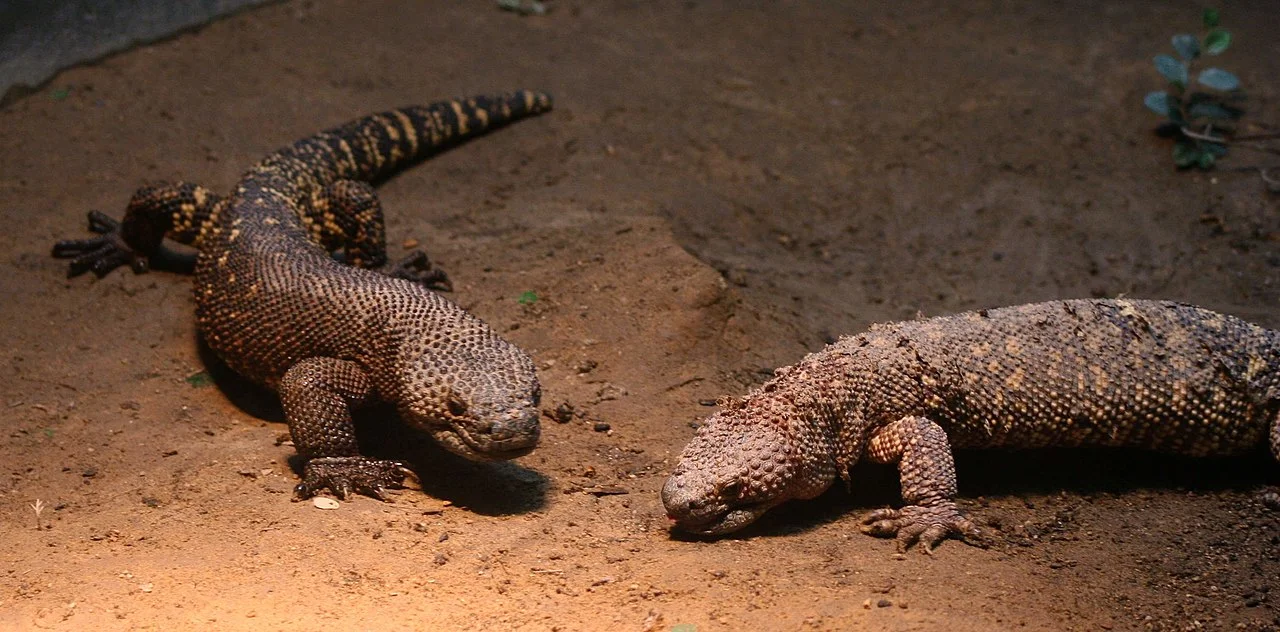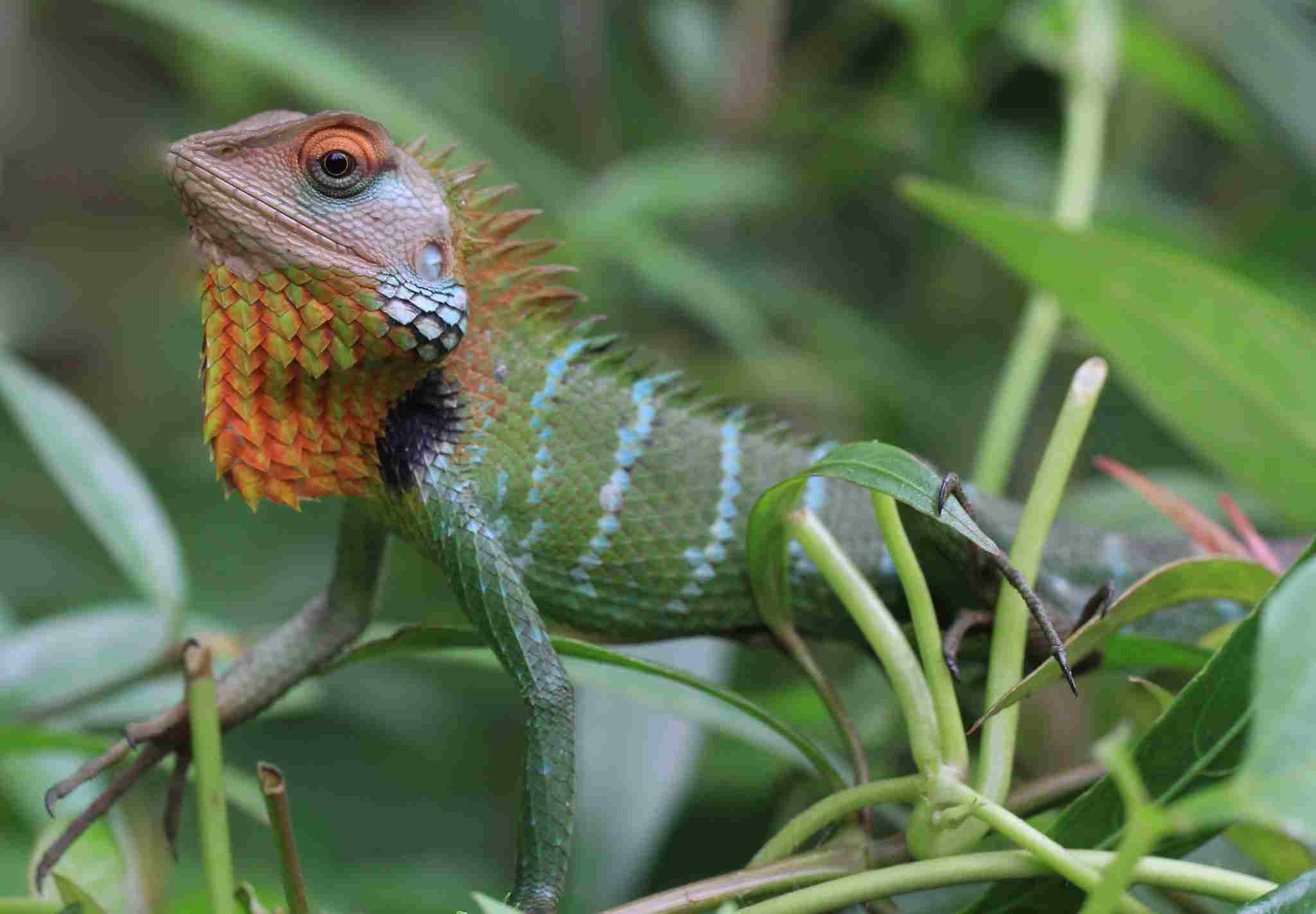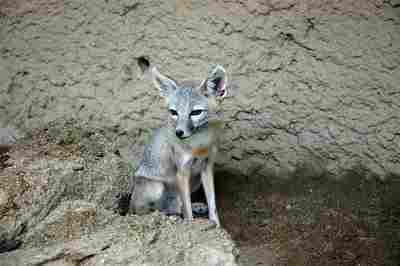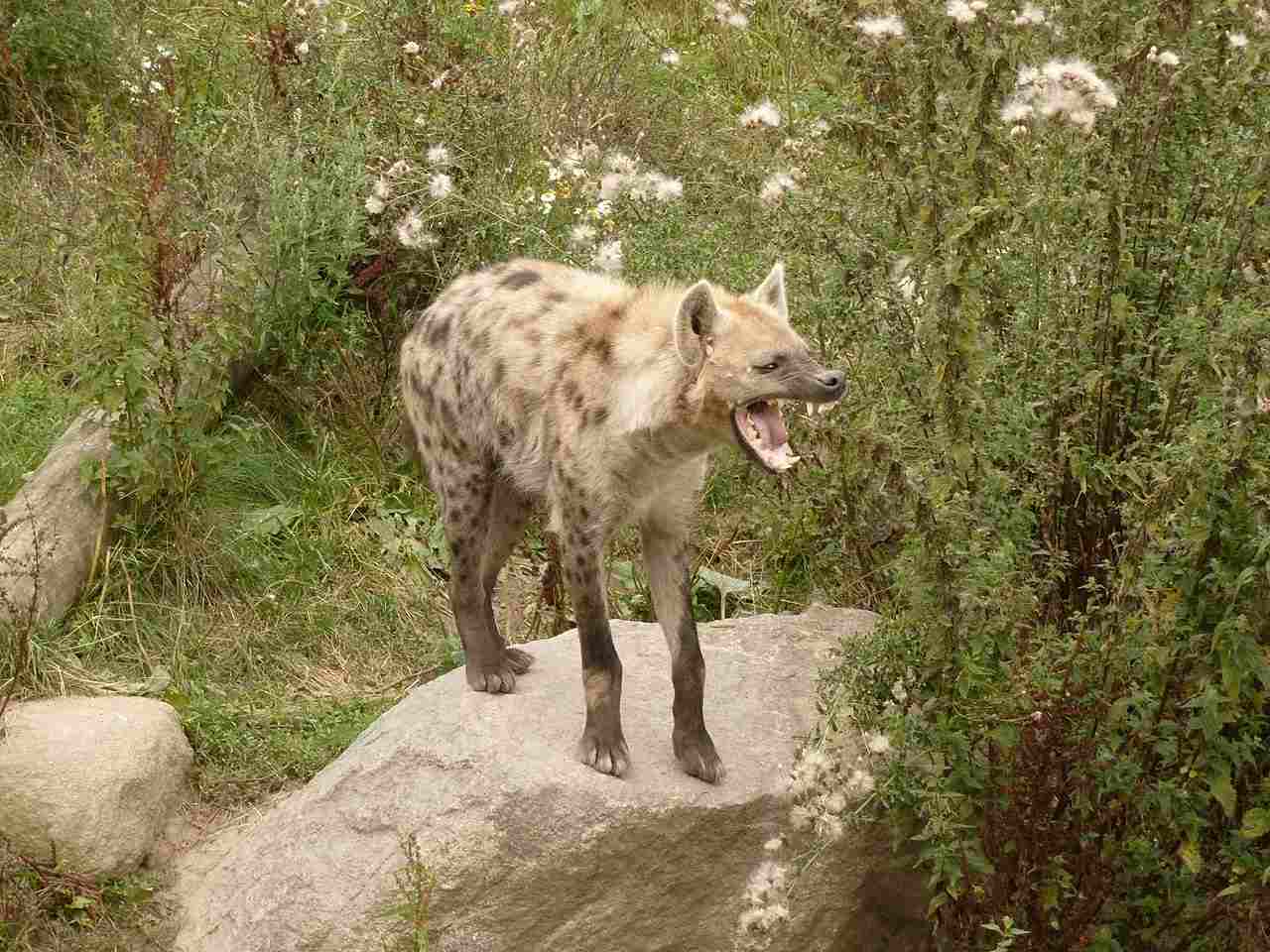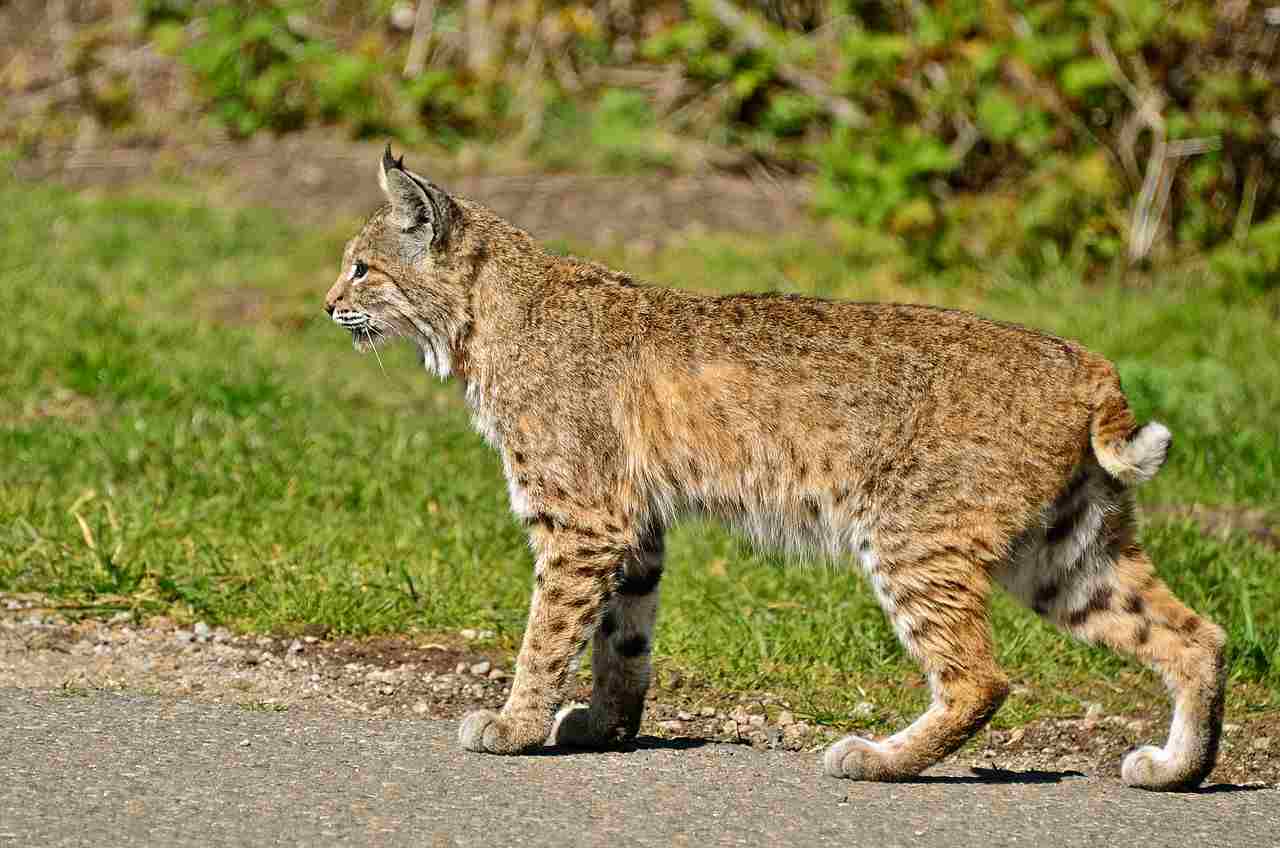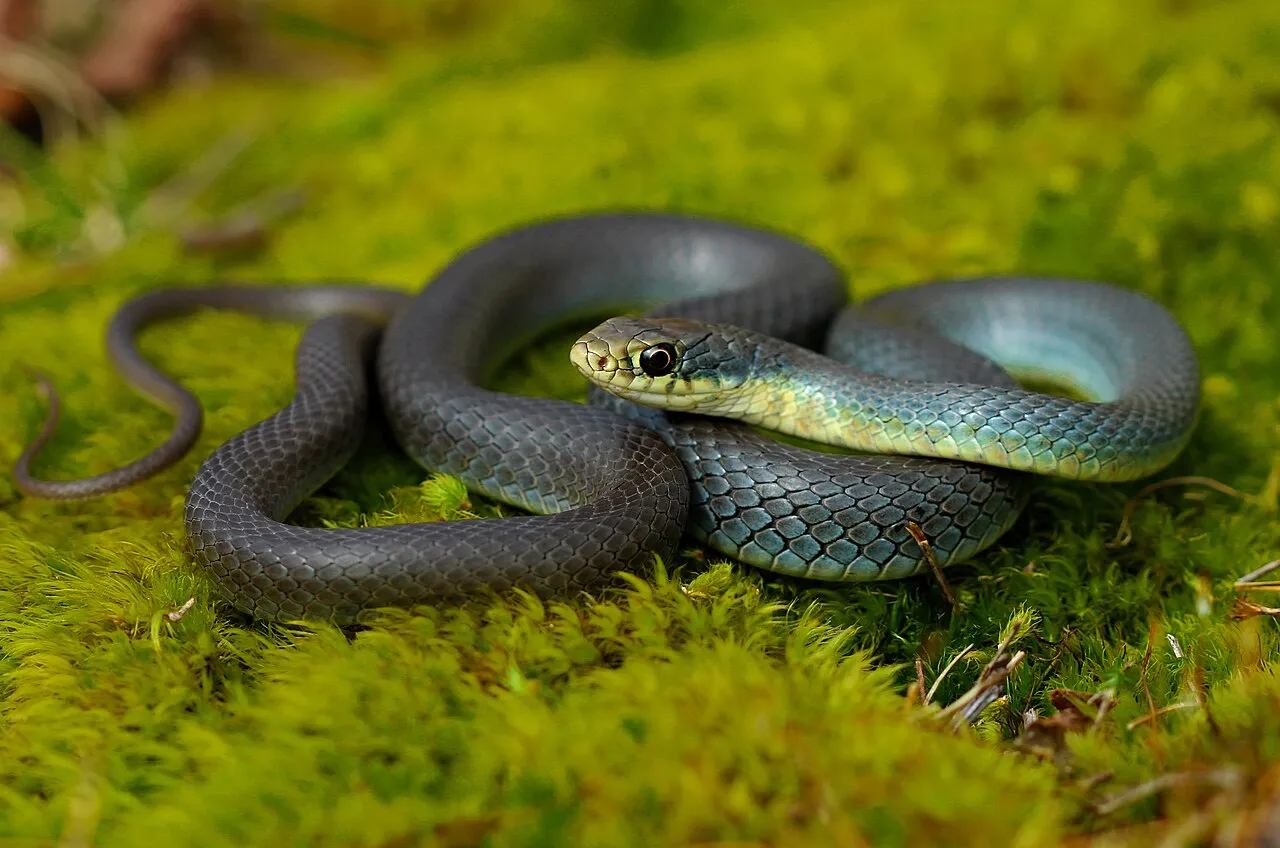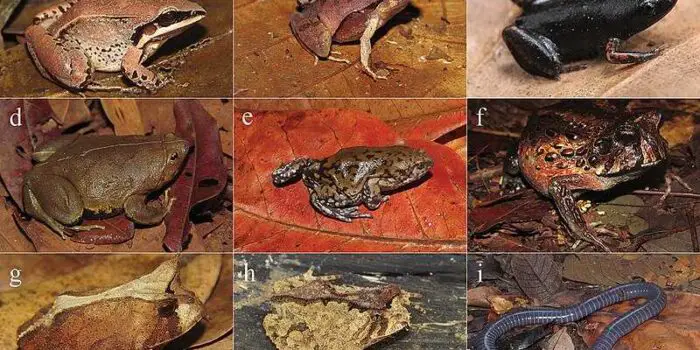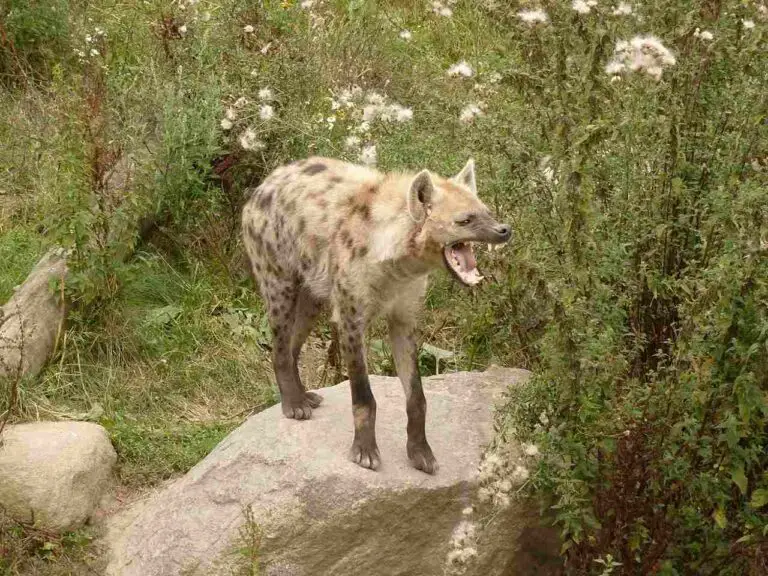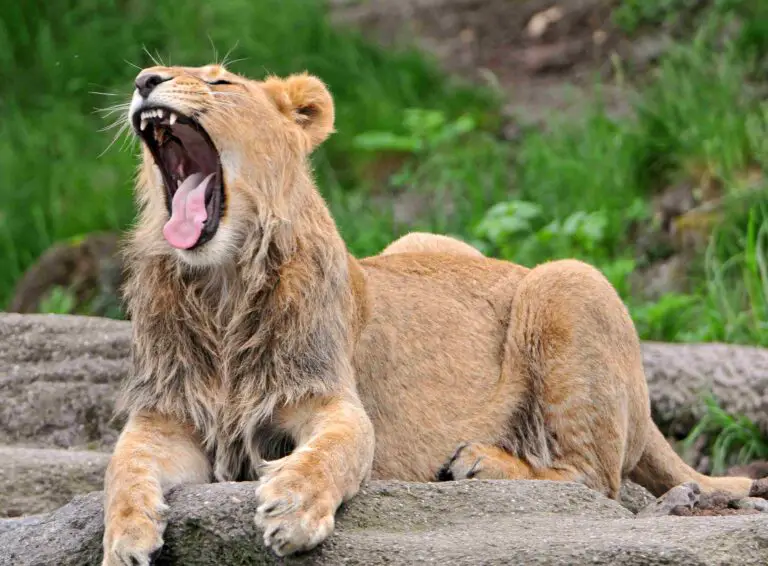13+ Carnivores in The Desert Ecosystem Discussed
Carnivores in the desert are specialized predators adapted to survive harsh arid conditions. They play vital roles in maintaining ecosystem balance and are equipped with various adaptations such as nocturnal behavior, efficient water conservation, and keen senses. Some notable desert carnivores include the Kit Fox, Fennec Fox, Golden Jackal, Bobcat, Mountain Lion, Hyena, Rattlesnake, Gila Monster, Monitor Lizard, Caracal, Hawk, African Wildcat, Tarantula, and Scorpion.
1. Kit Fox:
The Kit Fox (Vulpes macrotis) is a small carnivorous mammal found in the desert regions of North America, particularly in the southwestern United States and northern Mexico. Its name “kit” refers to its diminutive size, compared to other fox species.
Physical Characteristics:
Size: Kit foxes typically weigh between 3 to 6 pounds (1.4 to 2.7 kilograms) and stand about 12 inches (30 centimeters) tall at the shoulder.
Appearance: They have large ears relative to their body size, which helps them dissipate heat in the desert environment. Their fur is typically a grayish-yellow color, which provides camouflage against the sandy desert landscape.
Behavior and Habitat:
Nocturnal: Kit foxes are primarily nocturnal, which means they are most active during the night, avoiding the extreme heat of the desert days.
Solitary: They are solitary animals, usually only coming together during the mating season.
Burrow Dwellers: Kit foxes are adept at digging and often inhabit burrows, which provide shelter from the harsh desert conditions and predators.
Diet: Their diet consists mainly of small mammals like rodents, rabbits, and insects, as well as birds, reptiles, and occasionally fruits and plants.
Adaptations: Besides their large ears for thermoregulation, kit foxes have keen senses of sight, smell, and hearing, which help them locate prey and avoid predators in the vast desert landscape.
Conservation Status:
The kit fox population faces threats from habitat loss due to human development, as well as predation and competition from invasive species like coyotes.
However, they are not considered endangered, and their population remains relatively stable due to their ability to adapt to various desert habitats.
In summary, the kit fox is a fascinating carnivore uniquely adapted to thrive in the harsh desert environment, utilizing its nocturnal habits, burrow-dwelling behavior, and keen senses to survive and hunt for prey.
2. Fennec Fox:
The Fennec Fox (Vulpes zerda) is a small nocturnal fox species found in the Sahara Desert of North Africa and parts of the Arabian Peninsula. Known for its distinctive oversized ears, the Fennec Fox is a master of desert survival.
Physical Characteristics:
Size: Fennec foxes are the smallest species of canid, weighing between 1.5 to 3.5 pounds (0.68 to 1.58 kilograms) and measuring about 8 inches (20 centimeters) in height at the shoulder.
Ears: Their large ears, measuring up to 6 inches (15 centimeters) long, serve to dissipate heat and enhance hearing, crucial for detecting prey and avoiding predators in the desert.
Behavior and Habitat:
Nocturnal: Fennec foxes are primarily nocturnal, which allows them to avoid the scorching desert heat during the day.
Burrow Dwellers: They dig extensive burrows in sandy terrain, which serve as shelter from extreme temperatures and predators.
Diet: Fennec foxes are omnivores, feeding on a variety of small prey such as rodents, insects, birds, and eggs, as well as fruits and vegetation.
Conservation Status:
While not currently considered endangered, Fennec fox populations face threats from habitat loss due to human encroachment and the illegal pet trade.
Conservation efforts focus on protecting their desert habitat and combating illegal trafficking.
3. Golden Jackal:
The Golden Jackal (Canis aureus) is a medium-sized carnivore found in a variety of habitats, including deserts, across Africa, the Middle East, and South Asia. In desert regions, they play a crucial role as top predators.
Physical Characteristics:
Size: Golden jackals typically weigh between 15 to 35 pounds (7 to 16 kilograms) and stand about 16 inches (40 centimeters) tall at the shoulder.
Appearance: They have a golden or sandy-colored fur coat, which provides camouflage in desert environments.
Behavior and Habitat:
Opportunistic Feeders: Golden jackals are opportunistic omnivores, feeding on a diverse diet that includes small mammals, birds, reptiles, insects, fruits, and carrion.
Social Structure: They are often found in pairs or small family groups, but can also be solitary or form larger packs in certain habitats.
Adaptations: Golden jackals have excellent senses of sight, smell, and hearing, which aid in hunting prey and detecting potential threats.
Conservation Status:
The golden jackal population is currently stable, although localized threats such as habitat loss, persecution by humans, and competition with other carnivores can impact certain populations.
Conservation efforts focus on habitat protection and mitigating conflicts between humans and jackals.
These carnivores, the Fennec Fox and Golden Jackal, demonstrate remarkable adaptations for survival in the desert, from specialized physical features to versatile hunting strategies.
4. Bobcat:
The Bobcat (Lynx rufus) is a medium-sized carnivorous mammal native to North America, including various desert regions. Known for its elusive nature and distinctive appearance, the bobcat is an important predator in desert ecosystems.
Physical Characteristics:
Size: Bobcats are medium-sized cats, weighing between 15 to 30 pounds (6.8 to 13.6 kilograms) and measuring about 2 feet (61 centimeters) in length, excluding the tail.
Appearance: They have a compact body with short legs and a short, bobbed tail, from which they derive their name. Their fur varies in color from light gray to reddish-brown, often with spots or stripes for camouflage.
Behavior and Habitat:
Solitary Hunters: Bobcats are solitary animals, primarily active during dawn and dusk (crepuscular), which allows them to avoid the intense heat of the desert day.
Adaptability: They inhabit a variety of habitats within the desert, including rocky terrain, scrublands, and desert washes, where they hunt small mammals, birds, reptiles, and insects.
Territorial: Bobcats are territorial animals, marking their ranges with scent markings and vocalizations to avoid conflicts with other individuals.
Conservation Status:
Bobcat populations are generally stable across their range, although localized threats such as habitat loss, fragmentation, and human-wildlife conflicts can impact their numbers.
Hunting and trapping regulations help manage bobcat populations sustainably in many areas.
5. Mountain Lion:
The Mountain Lion (Puma concolor), also known as cougar, puma, or panther, is a large carnivorous cat found throughout various habitats in the Americas, including deserts. As apex predators, mountain lions play a crucial role in maintaining ecosystem balance.
Physical Characteristics:
Size: Mountain lions are large cats, with males weighing between 115 to 220 pounds (52 to 100 kilograms) and females weighing between 64 to 141 pounds (29 to 64 kilograms).
Appearance: They have a sleek, muscular body with a tan-colored fur coat, helping them blend into their desert surroundings. Mountain lions have a long tail, powerful jaws, and sharp claws for hunting.
Behavior and Habitat:
Solitary and Territorial: Mountain lions are solitary animals, except during mating season or when raising young. They establish territories that can range from 10 to 370 square miles (26 to 960 square kilometers), depending on habitat quality and prey availability.
Ambush Predators: Mountain lions are stealthy ambush predators, using their excellent camouflage and stealth to stalk and ambush prey such as deer, bighorn sheep, and smaller mammals.
Nocturnal and Crepuscular: They are primarily nocturnal and crepuscular, hunting during the cover of darkness or at dawn and dusk to avoid extreme temperatures and human activity.
Conservation Status:
Mountain lions face threats such as habitat loss, fragmentation, human-wildlife conflicts, and poaching in some regions.
Conservation efforts focus on protecting habitat corridors, implementing measures to reduce conflicts with humans and livestock, and ensuring sustainable hunting practices where applicable.
These desert carnivores, the Bobcat and the Mountain Lion, are integral components of desert ecosystems, playing vital roles as top predators and contributing to the balance of their respective habitats.
6. Hyena:
Hyenas belong to the family Hyaenidae and are known for their distinctive laughter-like vocalizations and powerful jaws. While commonly associated with savannahs, some species, such as the spotted hyena, can also inhabit desert regions.
Physical Characteristics:
Size: Hyenas vary in size depending on the species, with the spotted hyena (Crocuta crocuta) being the largest, weighing between 88 to 190 pounds (40 to 86 kilograms) and standing about 2.5 to 3 feet (76 to 91 centimeters) tall at the shoulder.
Appearance: They have a robust build with sloping backs, powerful jaws, and relatively short legs. The spotted hyena is characterized by its distinctive spotted coat and a mane of hair along its neck and back.
Behavior and Habitat:
Social Structure: Hyenas are highly social animals, living in clans that can consist of up to 80 individuals. Within clans, there is a strict hierarchy, with females typically dominating males.
Opportunistic Feeders: Hyenas are opportunistic scavengers and hunters, feeding on a wide range of prey, including small mammals, birds, reptiles, and carrion. They have powerful jaws capable of crushing bone, allowing them to access nutritious marrow.
Adaptations: In desert environments, hyenas have adapted to cope with extreme temperatures and scarce water sources. They have efficient kidneys for water conservation and can obtain moisture from their prey.
Conservation Status:
The conservation status of hyena species varies, with some populations facing threats such as habitat loss, human-wildlife conflict, and persecution due to misconceptions about their behavior.
Conservation efforts focus on habitat protection, reducing conflicts with humans, and raising awareness about the ecological importance of hyenas in maintaining healthy ecosystems.
7. Rattlesnake:
Rattlesnakes are venomous snakes belonging to the genera Crotalus and Sistrurus, found primarily in the Americas. They are well-adapted to desert environments and play important roles as predators in their ecosystems.
Physical Characteristics:
Size: Rattlesnake species vary in size, with some species measuring less than 1 foot (30 centimeters) in length, while others can exceed 8 feet (2.4 meters).
Appearance: They are characterized by their distinctive rattles, which are segments of keratin that produce a buzzing sound when shaken as a warning signal. Rattlesnakes have triangular heads and heat-sensing pits on their faces, which help them locate prey.
Behavior and Habitat:
Ambush Predators: Rattlesnakes are ambush predators, lying in wait for prey to pass by before striking with their venomous fangs. Their diet includes small mammals, birds, reptiles, and amphibians.
Nocturnal: They are primarily nocturnal, hunting and moving during the cooler nighttime hours to avoid the heat of the desert day.
Thermal Regulation: Rattlesnakes are ectothermic, relying on external sources of heat to regulate their body temperature. They bask in the sun during the day and seek shelter in cooler areas during the hottest parts of the day.
Conservation Status:
While rattlesnakes face threats such as habitat loss, persecution, and road mortality, they are not currently considered endangered. However, certain species and populations may be at risk due to localized threats.
Conservation efforts focus on habitat preservation, reducing human-wildlife conflict, and educating the public about the importance of rattlesnakes in desert ecosystems.
These desert carnivores, the Hyena and the Rattlesnake, exhibit remarkable adaptations for survival in their harsh environments, playing important ecological roles as top predators.
8. Gila Monster:
The Gila Monster (Heloderma suspectum) is a venomous lizard native to the southwestern United States and northwestern Mexico, including various desert regions such as the Sonoran and Mojave Deserts.
Physical Characteristics:
Size: Gila monsters are one of the largest lizards in North America, typically reaching lengths of 18 to 22 inches (46 to 56 centimeters).
Appearance: They have a distinctive appearance with a stocky body, short legs, and a thick tail. Their skin is covered in bead-like scales with vivid orange, pink, or yellow-black markings, serving as a warning to potential predators.
Behavior and Habitat:
Nocturnal: Gila monsters are primarily nocturnal, spending the hottest parts of the day sheltering in burrows or under rocks to avoid extreme temperatures.
Solitary: They are solitary animals, except during the breeding season when males may compete for females.
Diet: Gila monsters are carnivorous, feeding primarily on small mammals, birds, reptiles, eggs, and carrion. They are also known to consume some plant matter.
Adaptations and Conservation Status:
Venomous Bite: Gila monsters possess venom glands in their lower jaws and deliver venom through grooves in their teeth when biting prey or defending themselves. While their bite is not usually fatal to humans, it can cause intense pain and swelling.
Conservation Concerns: Gila monsters face threats such as habitat loss, fragmentation, and collection for the illegal pet trade. They are protected by law in many areas of their range to prevent overexploitation.
9. Monitor Lizard:
Monitor lizards belong to the family Varanidae and are found in various habitats worldwide, including deserts, forests, and savannahs. In desert regions, species such as the desert monitor are well-adapted to thrive in harsh conditions.
Physical Characteristics:
Size: Monitor lizard species vary in size, with some smaller species measuring less than 2 feet (60 centimeters) in length, while larger species like the Komodo dragon can exceed 10 feet (3 meters) in length.
Appearance: They have elongated bodies, long necks, powerful legs, and sharp claws. Their skin is covered in tough scales, providing protection against predators and harsh desert terrain.
Behavior and Habitat:
Diurnal: Monitor lizards are primarily diurnal, being active during the day to hunt for prey and bask in the sun to regulate their body temperature.
Opportunistic Feeders: They are opportunistic predators, feeding on a wide range of prey including insects, small mammals, birds, reptiles, and carrion.
Adaptations: Monitor lizards have well-developed senses of sight, smell, and hearing, which aid in locating prey and detecting potential threats in their desert habitat.
Conservation Status:
While many monitor lizard species are not currently considered endangered, some populations face threats such as habitat loss, persecution, and the illegal wildlife trade.
Conservation efforts focus on habitat protection, enforcement of regulations against illegal trade, and research to better understand the ecology and conservation needs of monitor lizards.
These desert-dwelling carnivores, the Gila Monster and the Monitor Lizard, showcase remarkable adaptations for survival in arid environments, from specialized behaviors to unique physiological traits.
10. Caracal:
The Caracal (Caracal caracal) is a medium-sized wild cat native to various regions in Africa, the Middle East, and South Asia, including desert habitats. Known for its distinctive tufted ears and agile hunting abilities, the caracal is a formidable predator in desert ecosystems.
Physical Characteristics:
Size: Caracals typically weigh between 20 to 40 pounds (9 to 18 kilograms) and stand about 16 to 20 inches (40 to 50 centimeters) tall at the shoulder.
Appearance: They have a sleek, muscular body with a short reddish-brown coat, adorned with distinctive tufted ears, which can measure up to 2 inches (5 centimeters) in length.
Behavior and Habitat:
Solitary Hunters: Caracals are solitary animals, except during mating season or when raising young. They are highly agile and skilled hunters, capable of leaping great distances to catch prey.
Diet: Their diet consists primarily of small to medium-sized mammals such as rodents, hares, and birds, but they may also prey on reptiles, insects, and occasionally larger ungulates.
Adaptations: Caracals have keen senses of sight, hearing, and smell, which they use to locate prey in their desert habitat. Their long legs and powerful hindquarters enable them to chase down fast-moving prey with ease.
Conservation Status:
While not currently considered endangered, caracal populations face threats such as habitat loss, fragmentation, and human-wildlife conflict in some regions.
Conservation efforts focus on habitat protection, reducing conflicts with humans, and monitoring population trends to ensure the long-term survival of caracals in their natural habitats.
11. Hawk:
Hawks are a diverse group of birds of prey belonging to the family Accipitridae, with various species found in desert habitats worldwide. These raptors play vital roles as top predators, controlling populations of small mammals, birds, and reptiles.
Physical Characteristics:
Size: Hawk species vary in size, with some smaller species having a wingspan of around 1 to 2 feet (30 to 60 centimeters), while larger species may have wingspans exceeding 4 feet (120 centimeters).
Appearance: They have sharp, curved beaks, powerful talons, and keen eyesight, which they use for hunting. Their plumage varies in color and pattern depending on the species and habitat.
Behavior and Habitat:
Diurnal Hunters: Hawks are primarily diurnal hunters, taking advantage of daylight hours to search for prey from the air or perched on vantage points.
Adaptations: They have excellent aerial agility and vision, allowing them to spot and pursue prey with precision. Hawks use a variety of hunting techniques, including soaring, hovering, and stooping (diving) to catch prey.
Habitat Range: Hawks inhabit a wide range of habitats, including deserts, grasslands, forests, and urban areas, where they hunt for rodents, birds, reptiles, and insects.
Conservation Status:
While many hawk species are not currently considered endangered, habitat loss, pollution, and persecution can impact certain populations.
Conservation efforts focus on habitat preservation, protection of nesting sites, and reducing threats such as poisoning and collisions with man-made structures.
These desert carnivores, the Caracal and the Hawk, demonstrate impressive hunting skills and adaptations for survival in arid environments, contributing to the ecological balance of their habitats.
12. African Wildcat:
The African Wildcat (Felis lybica) is a small wild feline native to Africa and the Arabian Peninsula, including various desert regions. Considered the ancestor of domestic cats, the African wildcat exhibits many behaviors and physical characteristics similar to its domesticated counterparts.
Physical Characteristics:
Size: African wildcats are small to medium-sized cats, typically weighing between 5 to 16 pounds (2.3 to 7.3 kilograms) and measuring about 14 to 20 inches (35 to 50 centimeters) in length.
Appearance: They have a slender build with short, sandy-colored fur, which provides camouflage in desert environments. African wildcats may have faint stripes or spots on their coat.
Behavior and Habitat:
Solitary Hunters: African wildcats are solitary hunters, primarily active during the twilight hours (crepuscular) or at night (nocturnal). They hunt a variety of small prey, including rodents, birds, reptiles, and insects.
Territorial: They establish and defend territories that can range in size depending on habitat quality and prey availability. Territories are marked with scent markings and vocalizations to deter intruders.
Adaptations: African wildcats have excellent senses of sight, hearing, and smell, which they use to locate prey and avoid predators in their desert habitat. They are also skilled climbers, allowing them to escape threats and access prey in trees and rocky outcrops.
Conservation Status:
While African wildcat populations are not currently considered endangered, they face threats such as habitat loss, fragmentation, and hybridization with domestic cats in some areas.
Conservation efforts focus on habitat preservation, reducing human-wildlife conflict, and raising awareness about the importance of protecting wildcat populations and their genetic diversity.
13. Tarantula:
Tarantulas are large, hairy spiders belonging to the family Theraphosidae, found in various habitats worldwide, including deserts. While often associated with fear and Halloween imagery, tarantulas play important ecological roles as predators of insects and other small animals.
Physical Characteristics:
Size: Tarantula species vary in size, with some smaller species having a leg span of a few inches, while larger species can have leg spans exceeding 10 inches.
Appearance: They have robust bodies covered in dense, bristly hairs, which serve as sensory organs for detecting vibrations and airborne chemicals. Tarantulas typically have eight eyes arranged in various patterns depending on the species.
Behavior and Habitat:
Nocturnal Hunters: Tarantulas are primarily nocturnal hunters, emerging from their burrows or hiding spots at night to search for prey such as insects, small vertebrates, and other arachnids.
Burrow Dwellers: Many tarantula species dig burrows in the ground, which serve as shelter from predators and extreme temperatures. They may line their burrows with silk and use them as retreats when not hunting.
Venomous: Tarantulas possess venom glands and fangs, which they use to subdue prey. While their venom is typically not harmful to humans, tarantula bites can cause localized pain, swelling, and irritation.
Conservation Status:
Tarantula populations are generally stable and not considered endangered, although some species may face localized threats such as habitat loss and collection for the pet trade.
Conservation efforts focus on habitat preservation, monitoring population trends, and regulating the collection and trade of tarantulas to ensure sustainable practices.
These desert-dwelling carnivores, the African Wildcat and the Tarantula, showcase diverse adaptations and behaviors for survival in arid environments, contributing to the ecological diversity of their habitats.
14. Scorpion:
Scorpions are arachnids belonging to the order Scorpiones, found in various desert regions worldwide. With their fearsome appearance and venomous sting, scorpions are iconic predators in desert ecosystems.
Physical Characteristics:
Size: Scorpion species vary in size, with some smaller species measuring less than an inch (2.5 centimeters) in length, while larger species can exceed 8 inches (20 centimeters).
Appearance: They have elongated bodies divided into two segments: the cephalothorax (head and thorax) and the abdomen. Scorpions have a pair of pincers (pedipalps) and a segmented tail ending in a venomous stinger.
Behavior and Habitat:
Nocturnal Predators: Scorpions are primarily nocturnal hunters, emerging from their burrows or hiding spots at night to search for prey such as insects, spiders, and small vertebrates.
Burrow Dwellers: Many scorpion species dig burrows in the ground, which serve as shelters from predators and extreme temperatures. They may line their burrows with silk and use them as retreats when not hunting.
Venomous Sting: Scorpions possess venom glands located at the base of their stingers, which they use to subdue prey and defend against threats. While most scorpion species are not lethal to humans, their stings can cause intense pain, swelling, and, in rare cases, allergic reactions.
Adaptations:
Sensory Organs: Scorpions have specialized sensory organs, including fine hairs and sensory bristles, which help them detect vibrations and locate prey in their desert habitat, even in low-light conditions.
Thermoregulation: Scorpions are ectothermic, relying on external sources of heat to regulate their body temperature. They are capable of withstanding extreme temperatures and can survive in harsh desert environments.
Conservation Status:
Scorpions are not typically considered endangered, as they are widespread and adaptable to various habitats. However, habitat loss and fragmentation, as well as collection for the pet trade and venom research, can impact certain populations.
Conservation efforts focus on habitat preservation, raising awareness about the ecological importance of scorpions, and promoting sustainable practices for collecting and studying these fascinating arachnids.
In desert ecosystems, scorpions play important roles as predators, helping control populations of insects and other arthropods. Their unique adaptations and behaviors make them well-suited for survival in arid environments, where they are integral components of the food web.
*Summary
Kit Fox (Vulpes macrotis):
Small mammal found in North American deserts.
Nocturnal, solitary, and burrow-dwelling.
Feeds on small mammals, birds, reptiles, and insects.
Fennec Fox (Vulpes zerda):
Small fox with large ears found in Sahara Desert.
Nocturnal, burrow-dwelling, and omnivorous.
Adapted to extreme desert temperatures.
Golden Jackal (Canis aureus):
Medium-sized carnivore found in African and Asian deserts.
Opportunistic feeder, social, and territorial.
Preys on small mammals, birds, and carrion.
Bobcat (Lynx rufus):
Medium-sized cat found in North American deserts.
Solitary, nocturnal, and ambush predator.
Hunts small mammals and birds.
Mountain Lion (Puma concolor):
Large cat found in various desert habitats.
Solitary, nocturnal, and ambush predator.
Hunts deer, bighorn sheep, and smaller mammals.
Hyena:
Social carnivore found in African and Asian deserts.
Scavenger, territorial, and nocturnal.
Feeds on carrion and small mammals.
Rattlesnake:
Venomous snake found in American deserts.
Nocturnal, ambush predator, and thermal regulator.
Hunts small mammals and reptiles.
Gila Monster:
Venomous lizard found in Southwestern U.S. deserts.
Nocturnal, solitary, and opportunistic feeder.
Hunts small mammals and reptiles.
Monitor Lizard:
Large lizard found in deserts worldwide.
Diurnal, opportunistic feeder, and territorial.
Hunts insects, small mammals, and reptiles.
Caracal:
Wild cat found in African and Asian deserts.
Solitary, nocturnal, and agile hunter.
Hunts small mammals and birds.
Hawk:
Bird of prey found in deserts worldwide.
Diurnal, aerial hunter, and opportunistic feeder.
Hunts small mammals, birds, and reptiles.
African Wildcat:
Wild cat found in African and Arabian deserts.
Solitary, nocturnal, and hunts small prey.
Resembles domestic cats.
Tarantula:
Large spider found in deserts worldwide.
Nocturnal, ambush predator, and burrow dweller.
Hunts insects and small vertebrates.
Scorpion:
Arachnid found in deserts worldwide.
Nocturnal, ambush predator, and burrow dweller.
Hunts insects and small vertebrates.
| Carnivore | Characteristics |
| Kit Fox |
– Small mammal found in North American deserts. – Nocturnal, solitary, and burrow-dwelling. – Feeds on small mammals, birds, reptiles, and insects.
|
| Fennec Fox |
– Small fox with large ears found in Sahara Desert. – Nocturnal, burrow-dwelling, and omnivorous. – Adapted to extreme desert temperatures.
|
| Golden Jackal |
– Medium-sized carnivore found in African and Asian deserts. – Opportunistic feeder, social, and territorial. – Preys on small mammals, birds, and carrion.
|
| Bobcat |
– Medium-sized cat found in North American deserts. – Solitary, nocturnal, and ambush predator. – Hunts small mammals and birds.
|
| Mountain Lion |
– Large cat found in various desert habitats. – Solitary, nocturnal, and ambush predator. – Hunts deer, bighorn sheep, and smaller mammals.
|
| Hyena |
– Social carnivore found in African and Asian deserts. – Scavenger, territorial, and nocturnal. – Feeds on carrion and small mammals.
|
| Rattlesnake |
– Venomous snake found in American deserts. – Nocturnal, ambush predator, and thermal regulator. – Hunts small mammals and reptiles.
|
| Gila Monster |
– Venomous lizard found in Southwestern U.S. deserts. – Nocturnal, solitary, and opportunistic feeder. – Hunts small mammals and reptiles.
|
| Monitor Lizard |
– Large lizard found in deserts worldwide. – Diurnal, opportunistic feeder, and territorial. – Hunts insects, small mammals, and reptiles.
|
| Caracal |
– Wild cat found in African and Asian deserts. – Solitary, nocturnal, and agile hunter. – Hunts small mammals and birds.
|
| Hawk |
– Bird of prey found in deserts worldwide. – Diurnal, aerial hunter, and opportunistic feeder. – Hunts small mammals, birds, and reptiles.
|
| African Wildcat |
– Wild cat found in African and Arabian deserts. – Solitary, nocturnal, and hunts small prey. – Resembles domestic cats.
|
| Tarantula |
– Large spider found in deserts worldwide. – Nocturnal, ambush predator, and burrow dweller. – Hunts insects and small vertebrates.
|
| Scorpion |
– Arachnid found in deserts worldwide. – Nocturnal, ambush predator, and burrow dweller. – Hunts insects and small vertebrates.
|
Related FAQs
FAQ 1: What adaptations do desert carnivores have to survive in harsh desert environments?
Answer: Desert carnivores have evolved various adaptations to thrive in arid conditions, including:
- Nocturnal behavior to avoid extreme heat during the day.
- Specialized kidney functions to conserve water.
- Efficient thermoregulation through behavioral adaptations like burrow dwelling or seeking shade.
- Keen senses of sight, smell, and hearing to locate prey and avoid predators.
- Physical adaptations such as large ears for heat dissipation or camouflage fur for blending into the environment.
FAQ 2: How do desert carnivores obtain water in arid environments?
Answer: Desert carnivores have several strategies for obtaining water in water-scarce desert environments, including:
- Obtaining moisture from prey animals, such as rodents or insects.
- Utilizing metabolic water produced during the digestion of food.
- Drinking from available water sources such as dew, rainwater, or waterholes when they are present.
- Some species, like the Fennec Fox, have specialized adaptations in their kidneys to efficiently conserve water.
FAQ 3: Are desert carnivores dangerous to humans?
Answer: While many desert carnivores, such as snakes or spiders, possess venom or can deliver painful bites, they generally do not pose a significant threat to humans unless provoked or mishandled. It’s important to exercise caution and respect wild animals’ space when encountering them in their natural habitat.
FAQ 4: What role do desert carnivores play in the ecosystem?
Answer: Desert carnivores play crucial roles in maintaining ecosystem balance and functioning. As top predators, they help control populations of prey species, preventing overgrazing or overpopulation of certain animals. Additionally, they contribute to nutrient cycling through scavenging and help shape vegetation dynamics by influencing the behavior of herbivores.
FAQ 5: Are there any conservation concerns for desert carnivores?
Answer: Some desert carnivores face conservation threats, primarily due to habitat loss, fragmentation, climate change, and human-wildlife conflicts. Additionally, certain species are targeted by poachers or collectors for the exotic pet trade. Conservation efforts focus on habitat preservation, reducing human-wildlife conflicts, enforcing regulations against illegal trade, and raising awareness about the importance of these species in desert ecosystems.
